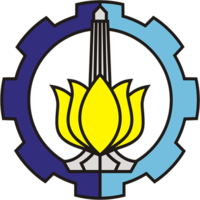Gas Price Policy Analysis for Fertilizer Industries in Indonesia Based on Netback from Final Product
Abstract
Keywords
Full Text:
PDFReferences
Appl M. (I999). Ammonia: Principles and Industrial Practice. Toronto: Wiley-VCH.
Baboo, P. (2018). Urea Plant Energy Improved with Operation Philosophy & Reactor Internal. International Journal of Engineering Research & Technology (IJERT) Vol. 7, 70-79.
Bazzanella, A. M. & Ausfelder, F. (2017). Low carbon energy and feedstock for the European chemical industry. Frankfurt: DECHEMA.
Fertecon. (2019). Urea Outlook 2019.
Fortez, M. P., Dumitriu, & Tzimas. (2014). CO2 Utilization Pathways: Techno-Economic Assessment and Market Opportunities. Energy Procedia 63, 7968-7975.
Hartarto, Airlangga (2016), Bahan Rapat Harga Gas Untuk Industri. Retrieved from coordination meeting. Jakarta, 15th August 2016.
IEAGHG. (2017). Techno-Economic Evaluation of HYCO Plant Integrated to Ammonia/Urea or Methanol Production with CCS.
Kermeli, K., Worrel, Graus, & Corsten. (2017). Energy Efficiency and Cost Saving Opportunities for Ammonia and Nitrogenous Fertilizer Production. United States Environmental Protection Agency.
Kirova, Zornitza. (2017). Exergy-based estimation and comparison of urea and ammonium nitrate production efficiency and environmental impact. Energy 140, 158-169.
Malik, Arif S. (2006). Electricity Tariffs Based on Long-Run Marginal Costs for Central Grid System Of Oman. Energy volume 31, 1703–1714.
Mian, M. A. 2011. Project Economics and Decision Analysis. Oklahoma: Penwell.
Nieuwenhuyse, (2000). Production of Ammonia. Belgium: European Fertilizer Manufacture Association.
Nugroho, Ando & Amir, Hidayat, (2018). Analisis Dampak Insentif Fiskal Penetapan Harga Gas Bagi Industri Domestik Terhadap Perekonomian: Pendekatan Model CGE Dinamis. Kajian Ekonomi dan Keuangan, Volume 2, pp. 40-51.
Pupuk Indonesia, (2017). Annual Report Pupuk Indonesia 2017, Jakarta: s.n
Tooth, R., (2014). Measuring Long-Run Marginal Cost for Pricing, Sydney: Sapere Research Group.
Wang, Y., & Zhu, Z. (2018). Cost of Natural Gas in Eastern Chinese Markets: Implications for LNG Imports. IAEE Energy Forum, 21-28.
World Bank. 1998. Fertilizer Sector Restructuring Project.
Yara. (2018). Yara Fertilizer Industry Handbook.
DOI: http://dx.doi.org/10.12962%2Fj24433527.v13i2.7704
Refbacks
- There are currently no refbacks.
This work is licensed under a Creative Commons Attribution 4.0 International License.





